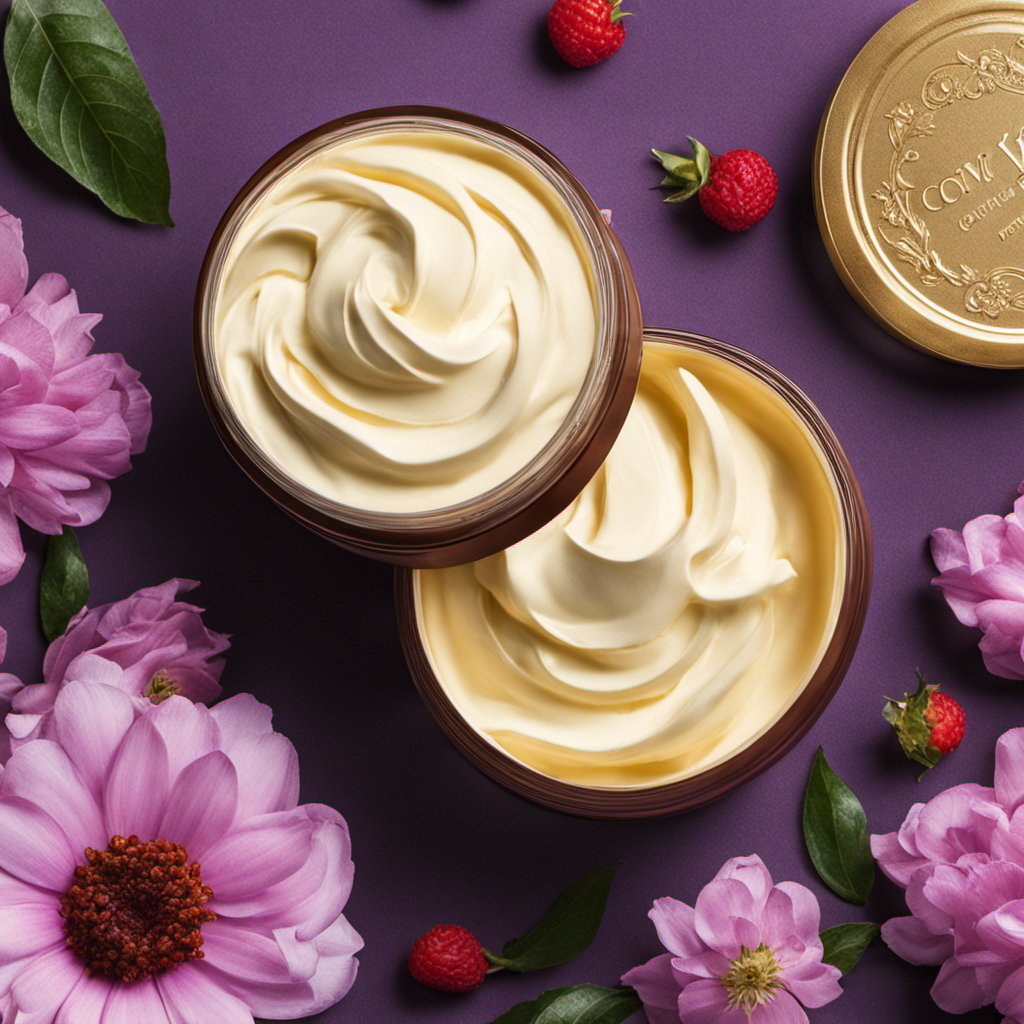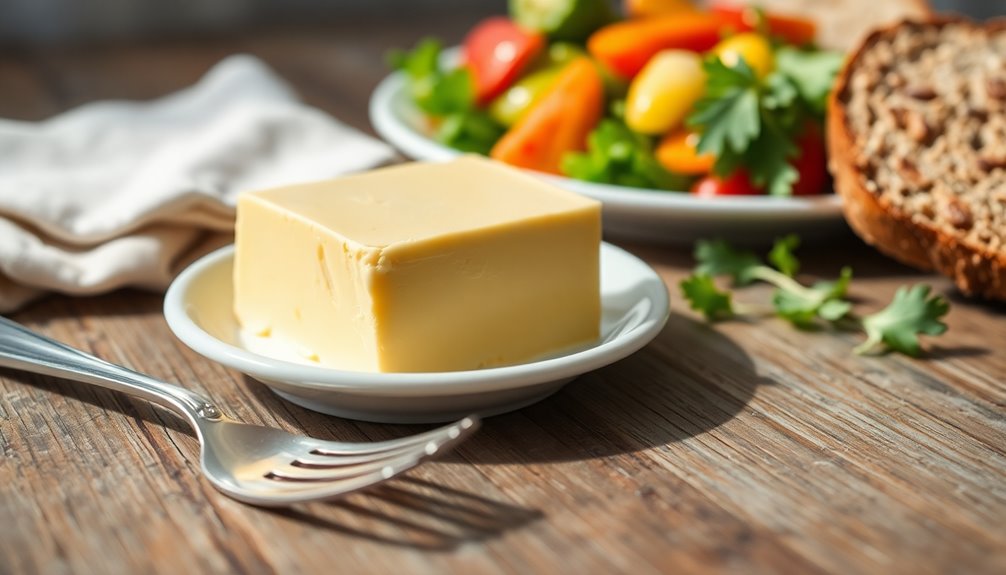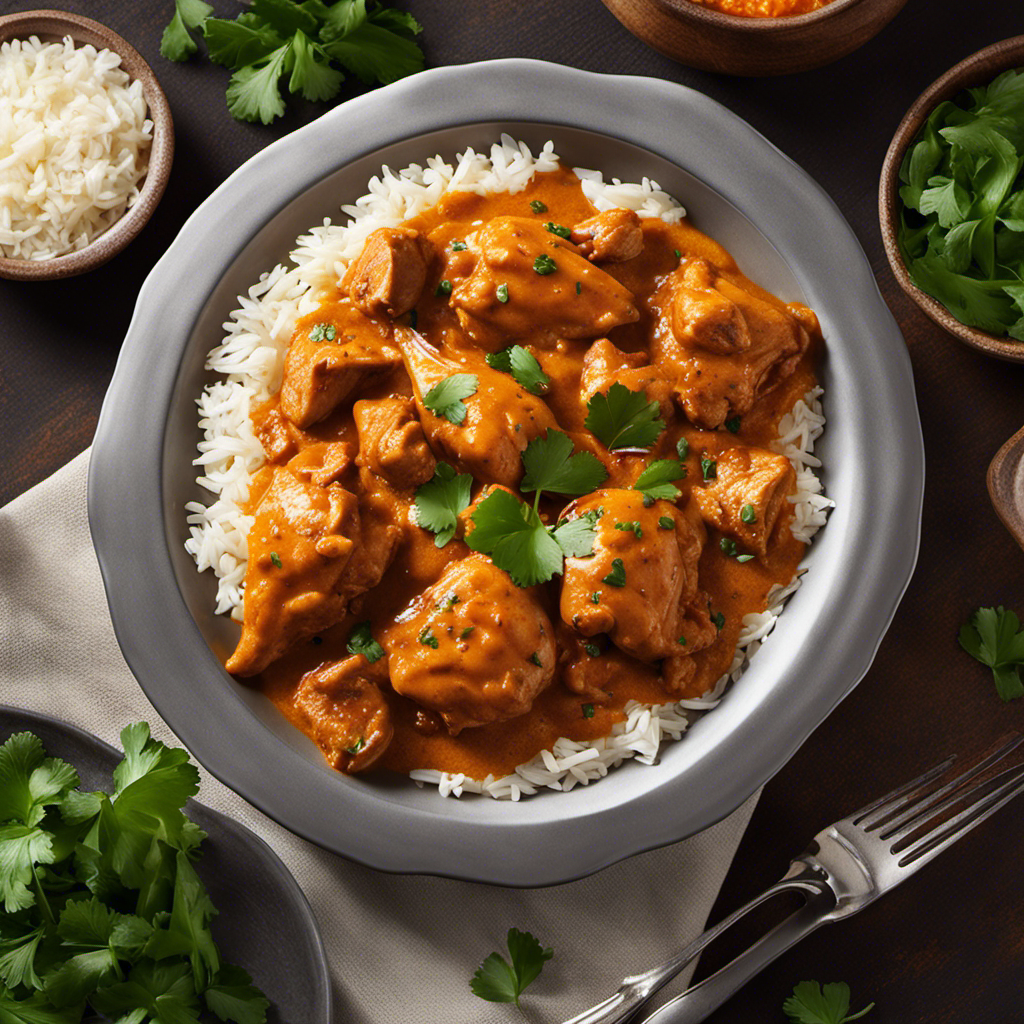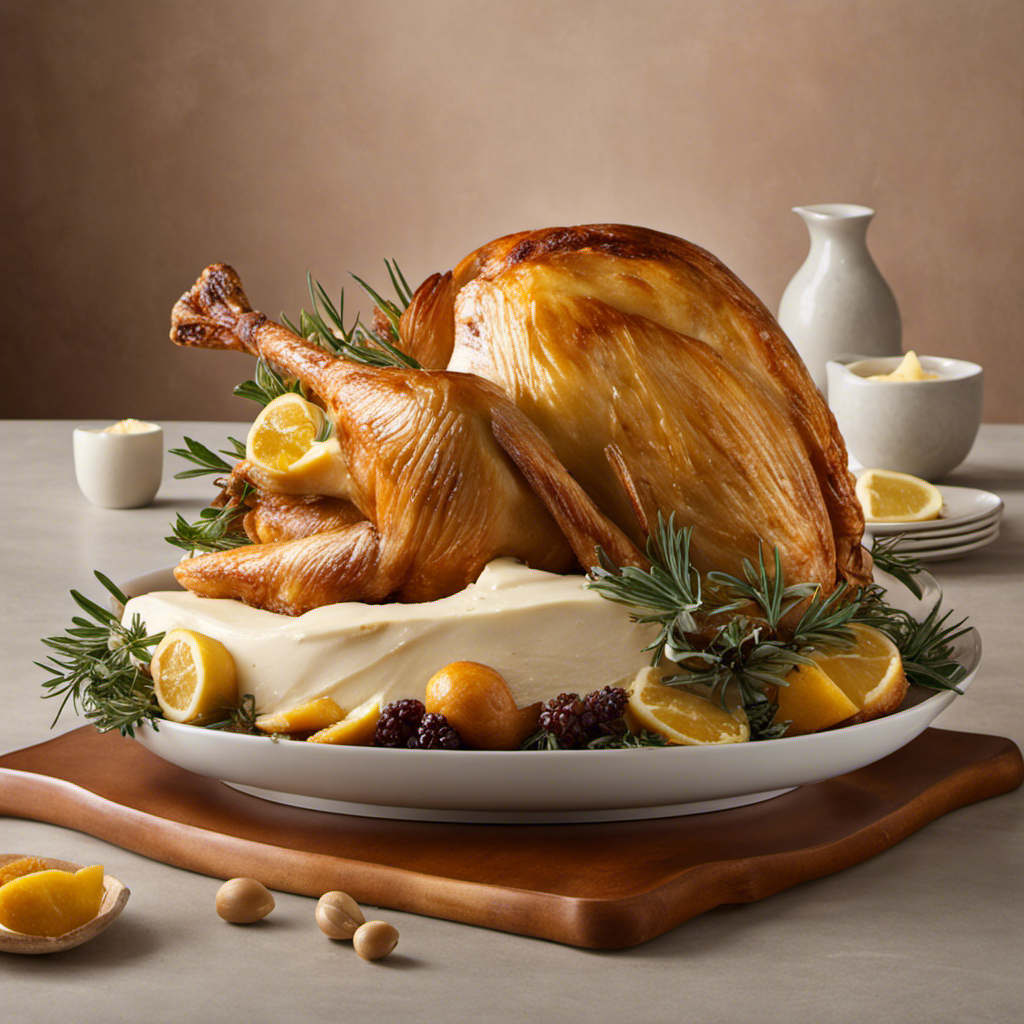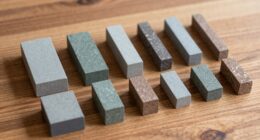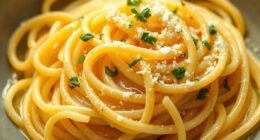I am absolutely mesmerized by body butter! It seems like a miraculous transformation contained in a jar, turning rough and dull skin into a smooth and radiant masterpiece.
But what exactly is body butter? Well, let me break it down for you.
Body butter is a luxurious and ultra-nourishing moisturizer that is packed with rich ingredients like shea butter and cocoa butter.
In this article, I’ll dive deep into the origins, ingredients, benefits, and even share some homemade recipes for you to try.
Trust me, you won’t want to miss out on this buttery goodness!
Key Takeaways
- Body butter originated with the ancient Egyptians and has been used throughout history to moisturize and protect the skin.
- Body butter contains natural oils like shea butter and cocoa butter, as well as essential oils and emulsifiers to create a smooth texture.
- Using body butter provides deep hydration, nourishment, and a protective barrier for the skin.
- When choosing a body butter, consider your skin type, read the ingredients list for natural and soothing ingredients, and avoid harsh chemicals or artificial additives.
The Origins of Body Butter
You might be wondering where body butter originated from. Well, let me take you back in time to the ancient Egyptians. They were the ones who first discovered the amazing benefits of body butter.
It was an essential part of their beauty regimen, used to moisturize and protect their skin from the harsh desert climate. The Egyptians used a combination of natural ingredients like shea butter, cocoa butter, and various oils to create their body butter.
Over time, body butter spread to other civilizations, such as the Greeks and Romans, who also recognized its nourishing properties. Today, body butter has evolved and is available in a wide range of scents and formulations.
Now that you know the origins and history of body butter, let’s dive into understanding the ingredients in body butter.
Understanding the Ingredients in Body Butter
When using body butter, it’s important to understand the ingredients it contains. Here are four key things to know about the ingredients in body butter:
-
Natural Oils: Body butter often contains natural oils like shea butter, cocoa butter, or mango butter. These oils are rich in vitamins and antioxidants, providing deep hydration and nourishment to the skin.
-
Essential Oils: To enhance the sensory experience, body butter may include essential oils that provide pleasant scents and fragrances. These oils are derived from plants and flowers, offering a wide range of options to explore.
-
Emulsifiers: Body butter contains emulsifiers that help bind the water and oil components together. Common emulsifiers include beeswax or lecithin, ensuring a smooth and creamy texture.
-
Preservatives: To prolong the shelf life of body butter, preservatives are added. These prevent the growth of bacteria and mold, ensuring the product remains safe to use.
The Benefits of Using Body Butter
One of the benefits of using body butter is that it provides deep hydration and nourishment to the skin. Body butter is a luxurious and thick moisturizer that is packed with essential oils and natural ingredients. It has a high concentration of fatty acids that help to replenish and restore the skin’s moisture barrier, leaving it feeling soft and supple.
Additionally, body butter creates a protective layer on the skin, which helps to lock in moisture and prevent dryness. The best body butter brands use high-quality ingredients that are rich in vitamins and antioxidants, such as shea butter, cocoa butter, and coconut oil. These ingredients not only hydrate the skin but also promote elasticity and improve skin tone.
Some popular and highly recommended body butter brands include The Body Shop, L’Occitane, and Burt’s Bees.
How to Choose the Right Body Butter for Your Skin Type
To choose the right body butter for your skin type, it’s important to consider factors such as your skin’s level of hydration and sensitivity. Here are some tips to help you make the best choice:
-
Determine your skin type: Is it dry, oily, or combination? This will help you select a body butter with the right level of moisture and nourishment for your skin.
-
Read the ingredients list: Look for body butters that are made with natural ingredients. Choosing natural ingredients ensures that you are giving your skin the best care without any harsh chemicals or synthetic additives.
-
Avoid synthetic additives: Synthetic additives can irritate sensitive skin and cause allergic reactions. Opt for body butters that are free from artificial fragrances, dyes, and preservatives.
-
Consider additional benefits: Some body butters have added benefits like anti-aging properties or soothing ingredients for sensitive skin. Look for these extra features based on your specific needs.
The Different Ways to Use Body Butter
As someone who’s struggled with dry skin, I understand the importance of finding effective solutions.
Moisturizing dry skin is crucial for maintaining its health and preventing further irritation.
In addition, body butter can be a great remedy for treating rough elbows, providing deep hydration and nourishment.
Lastly, if you suffer from cracked heels, using body butter regularly can help soften and repair the skin, leaving your feet feeling smooth and rejuvenated.
Moisturizing Dry Skin
Apply body butter to your dry skin for deep hydration and nourishment. As someone who has struggled with dry skin for years, I can attest to the effectiveness of body butter in treating eczema and preventing wrinkles. Here are four reasons why body butter is a must-have for dry skin:
-
Intense Moisture: Body butter contains rich ingredients like shea butter and cocoa butter that penetrate deeply into the skin, providing long-lasting moisture and relief for dry, itchy skin.
-
Skin Barrier Protection: The thick texture of body butter creates a protective barrier on the skin, helping to lock in moisture and prevent water loss, which is essential for treating eczema.
-
Nutrient-Rich Formula: Body butter is packed with essential vitamins and antioxidants that nourish the skin, promoting a healthy and youthful complexion. These nutrients also help in preventing wrinkles by improving skin elasticity.
-
Lasting Hydration: Unlike lotions or creams, body butter has a higher oil content, ensuring that the skin stays hydrated for a longer period of time.
Incorporating body butter into your skincare routine can make a significant difference in the health and appearance of your dry skin. Give it a try and experience the deep hydration and nourishment it provides.
Treating Rough Elbows
Smooth rough elbows by exfoliating with a scrub containing gentle exfoliating ingredients like sugar or salt. Exfoliation is key in removing dead skin cells and revealing smoother, softer skin underneath.
Start by wetting your elbows with warm water to soften the skin. Then, apply the scrub and gently massage it in circular motions for a few minutes. Rinse off with warm water and pat dry.
After exfoliating, it’s important to moisturize your elbows to keep them hydrated and prevent further dryness. Look for a moisturizer that contains nourishing ingredients like shea butter or almond oil. Apply it generously and massage it into the skin until fully absorbed.
Repeat this routine regularly to maintain smooth, moisturized elbows. Remember, the same principles for treating dry hands and healing chapped lips also apply when it comes to caring for your elbows.
Softening Cracked Heels
To soften cracked heels, start by soaking your feet in warm water for about 10-15 minutes. This helps to loosen dead skin cells and make them easier to remove. After soaking, gently scrub your feet with a pumice stone or foot file to exfoliate the calloused areas.
Here are some additional tips for healing calloused feet and preventing foot odor:
-
Moisturize daily: Apply a thick moisturizer or foot cream to your feet, focusing on the heels and calloused areas. This helps to hydrate and soften the skin.
-
Wear supportive shoes: Choose footwear that provides proper arch support and cushioning to prevent excessive pressure on your heels.
-
Use foot powder: Sprinkle foot powder in your shoes to absorb moisture and prevent foot odor.
-
Practice good hygiene: Wash your feet daily, dry them thoroughly, and change your socks regularly to keep your feet clean and fresh.
Homemade Body Butter Recipes to Try
Body butter is a luxurious and moisturizing skincare product that offers numerous benefits for the skin. It is made using a combination of nourishing ingredients that deeply hydrate and nourish the skin. Some common ingredients found in body butter include shea butter, cocoa butter, and various oils, all of which work together to provide intense hydration and improve the skin’s texture and appearance.
In this discussion, we will explore the benefits of using body butter and take a closer look at the key ingredients that make it such an effective skincare product.
Benefits of Body Butter
Applying body butter regularly can help improve the moisture levels of your skin. Body butter is a luxurious and deeply hydrating skincare product that contains moisturizing properties and nourishing ingredients. Here are four reasons why body butter is beneficial for your skin:
-
Intense Hydration: Body butter is thicker than lotions and creams, providing a higher concentration of moisture to your skin. It helps to lock in hydration and prevent moisture loss, leaving your skin feeling soft and supple.
-
Long-lasting Moisture: The rich and emollient texture of body butter creates a protective barrier on your skin, sealing in moisture for hours. It is especially beneficial for dry and dehydrated skin, providing long-lasting hydration throughout the day.
-
Deeply Nourishing: Body butter is often formulated with nourishing ingredients such as shea butter, cocoa butter, and oils like jojoba or almond. These ingredients are rich in vitamins, antioxidants, and essential fatty acids that nourish and replenish the skin, promoting a healthy complexion.
-
Soothing and Calming: Body butter is not only great for hydrating the skin but also for soothing and calming irritations or inflammations. It can help alleviate dryness, itching, and redness, making it suitable for sensitive or eczema-prone skin.
Incorporating body butter into your skincare routine can provide intense hydration, nourishment, and soothing benefits for your skin.
Ingredients for Body Butter
Now that we have discussed the benefits of body butter, let’s dive into the key ingredients that make it so effective.
Body butter is typically made from a combination of natural oils and butters, such as shea butter, cocoa butter, and coconut oil. These ingredients are rich in essential fatty acids and vitamins, which deeply nourish and moisturize the skin. Shea butter, for example, is known for its healing properties and ability to lock in moisture, while cocoa butter helps improve skin elasticity. Coconut oil is a powerful emollient that soothes dry and irritated skin. Other ingredients like almond oil, jojoba oil, and vitamin E are often added to enhance the benefits of body butter.
With such a potent blend of ingredients, body butter provides intense hydration, promotes skin health, and leaves your skin feeling soft and smooth.
Now, let’s move on to the frequently asked questions about body butter.
Frequently Asked Questions About Body Butter
One of the most commonly asked questions about body butter is how often should it be applied. The frequency of application depends on various factors, such as your skin type, climate, and personal preference.
However, as a general guideline, it is recommended to apply body butter at least once a day, preferably after showering or bathing when your skin is still damp. This helps to lock in moisture and keep your skin hydrated throughout the day.
If you have dry or very dry skin, you may want to apply body butter more frequently, such as in the morning and before bedtime. Remember to massage the body butter gently into your skin until it is fully absorbed.
Using homemade body butter recipes can provide additional benefits, as they often contain natural and nourishing ingredients. Some benefits of using body butter include:
-
Deep hydration: Body butter is rich in emollients that penetrate deep into the skin, providing intense hydration and preventing moisture loss.
-
Skin nourishment: Homemade body butter recipes often include ingredients like shea butter, cocoa butter, and oils that nourish and replenish the skin.
-
Improved skin texture: Regular use of body butter can help improve the texture of your skin, making it softer, smoother, and more supple.
-
Protection against environmental damage: Body butter forms a protective barrier on the skin, shielding it from harsh environmental factors like wind, cold, and pollution.
Frequently Asked Questions
Can Body Butter Be Used on the Face?
Yes, body butter can be used on the face, but it’s important to consider your skin type. It can cause breakouts if you have acne-prone skin or clog pores if it’s too heavy for your face.
Is Body Butter Suitable for All Skin Types?
Yes, body butter is suitable for all skin types. It provides numerous benefits for dry skin, such as intense hydration and nourishment. There are also different types of body butter available for specific skin concerns like sensitive or aging skin.
Can Body Butter Be Used on Sensitive Skin?
Yes, body butter can definitely be used on sensitive skin. It provides intense moisture and nourishment, making it beneficial for conditions like eczema and psoriasis. Its rich texture soothes and protects the skin, leaving it soft and supple.
How Often Should Body Butter Be Applied?
I find that applying body butter regularly helps keep my skin moisturized and nourished. Depending on my skin’s needs, I usually apply it once or twice a day. Consistency is key for reaping the benefits.
Can Body Butter Help With Reducing the Appearance of Stretch Marks?
Yes, body butter can help reduce the appearance of stretch marks. The best body butter for scars often contains ingredients like cocoa butter and shea butter, which deeply moisturize the skin and improve its elasticity. Additionally, body butter is great for dry skin as it provides intense hydration.
Conclusion
In conclusion, body butter is just another fancy term for lotion. It’s a thick, luxurious cream that claims to moisturize and nourish your skin. While it may seem like a magical potion, the truth is that body butter is nothing more than a blend of oils and butters.
So, the next time you’re tempted to splurge on an expensive jar of body butter, remember that you can achieve the same results with a simple bottle of lotion. Save your money and keep your skin hydrated with a good old-fashioned moisturizer.
